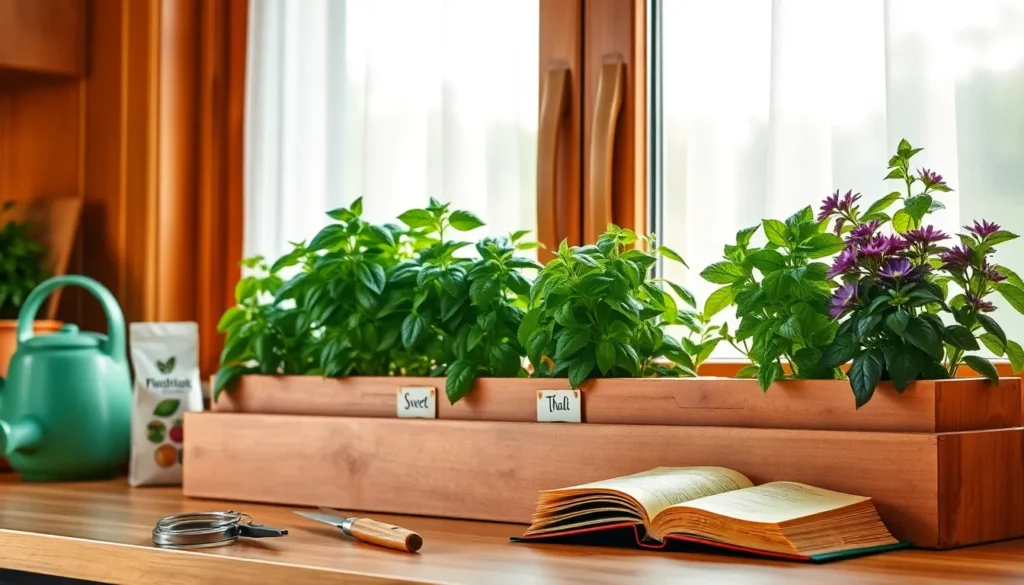Imagine the aroma of fresh basil infusing your home, just a few steps away from your kitchen. Whether you’re a seasoned gardener or just starting out, growing basil indoors can be a rewarding venture that brings a touch of nature’s vibrancy into your everyday life. This versatile herb not only elevates your culinary creations but also offers a sense of accomplishment as you nurture it from seed to sprig. For both the eager novice and the experienced green thumb, cultivating basil indoors is an opportunity to explore the joys of gardening in a compact and manageable way.
In our journey through this article, we’re going to unlock the secrets of indoor basil cultivation, ensuring you have a thriving herb garden all year round. You’ll learn everything from selecting the right basil variety to creating the perfect growing environment, tailored to your home’s unique conditions. With just a few simple steps, even the most inexperienced gardener can transform a windowsill into a flourishing basil haven. For those with a bit more gardening experience, we’ll delve into advanced tips for maximizing your basil’s growth and flavor potential.
By the end of this article, you’ll have the knowledge and confidence to grow lush, aromatic basil in the comfort of your home. We’ll guide you through the essential care techniques, including watering, lighting, and harvesting, to keep your basil healthy and productive. Whether you’re aiming to enhance your home cooking or simply enjoy the satisfaction of growing your own herbs, you’ll find that indoor basil gardening is both a practical and delightful endeavor. Let’s embark on this green-thumb adventure together, transforming your indoor space into a thriving herb oasis.
Select a Suitable Basil Variety
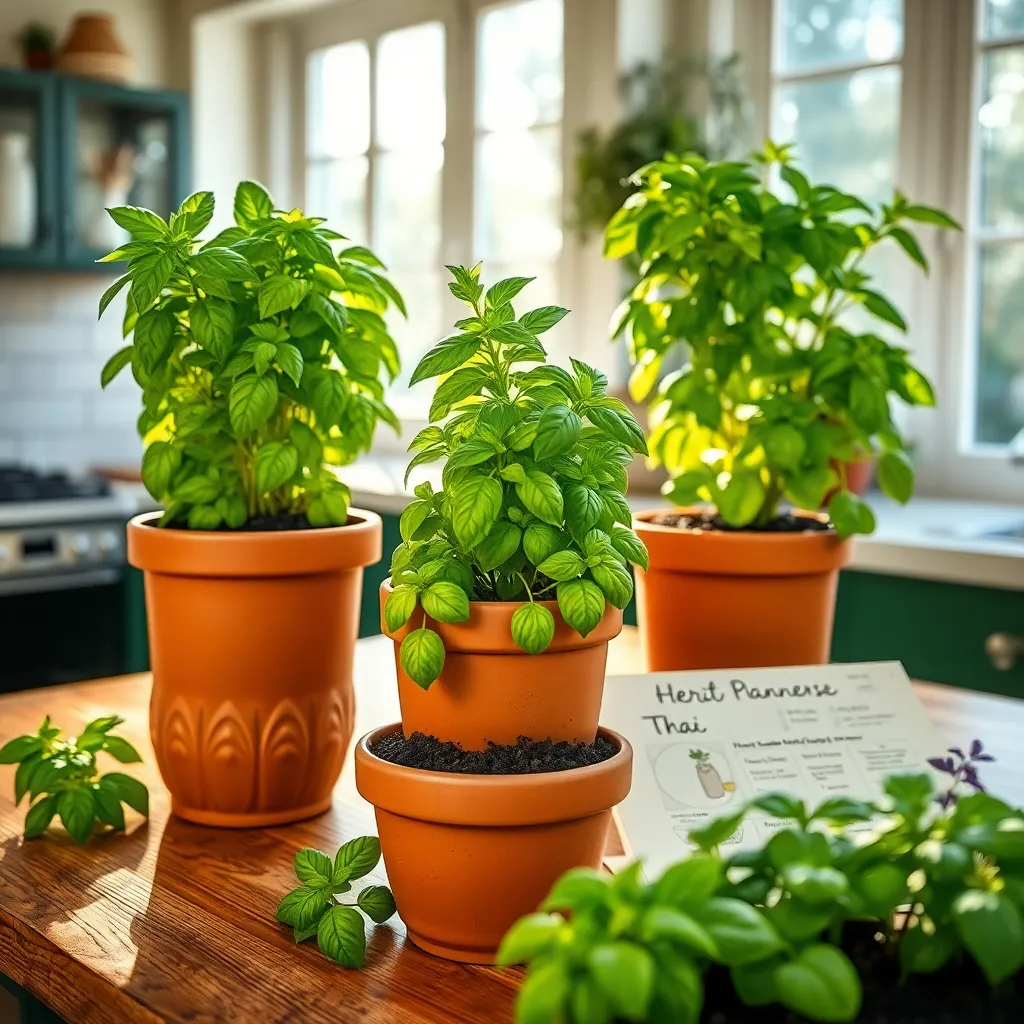
Choosing the right basil variety for indoor growing is crucial for success. Different varieties have unique flavors, growth habits, and care requirements, so it’s important to match them with your available space and culinary needs.
Sweet Basil is a popular choice for its classic flavor and adaptability to indoor environments. It thrives in well-draining soil mixed with perlite or vermiculite, and requires at least six hours of bright, indirect sunlight daily.
For a more compact option, Greek Basil is an excellent choice due to its small, bushy nature. It grows well in containers, making it perfect for windowsills, and can be snipped frequently to encourage bushier growth.
If you’re looking for a unique flavor, try growing Lemon Basil, which adds a citrusy twist to dishes. This variety prefers slightly warmer conditions and should be watered when the top inch of soil feels dry, ensuring the roots don’t sit in water.
Prepare Well-Draining Potting Mix
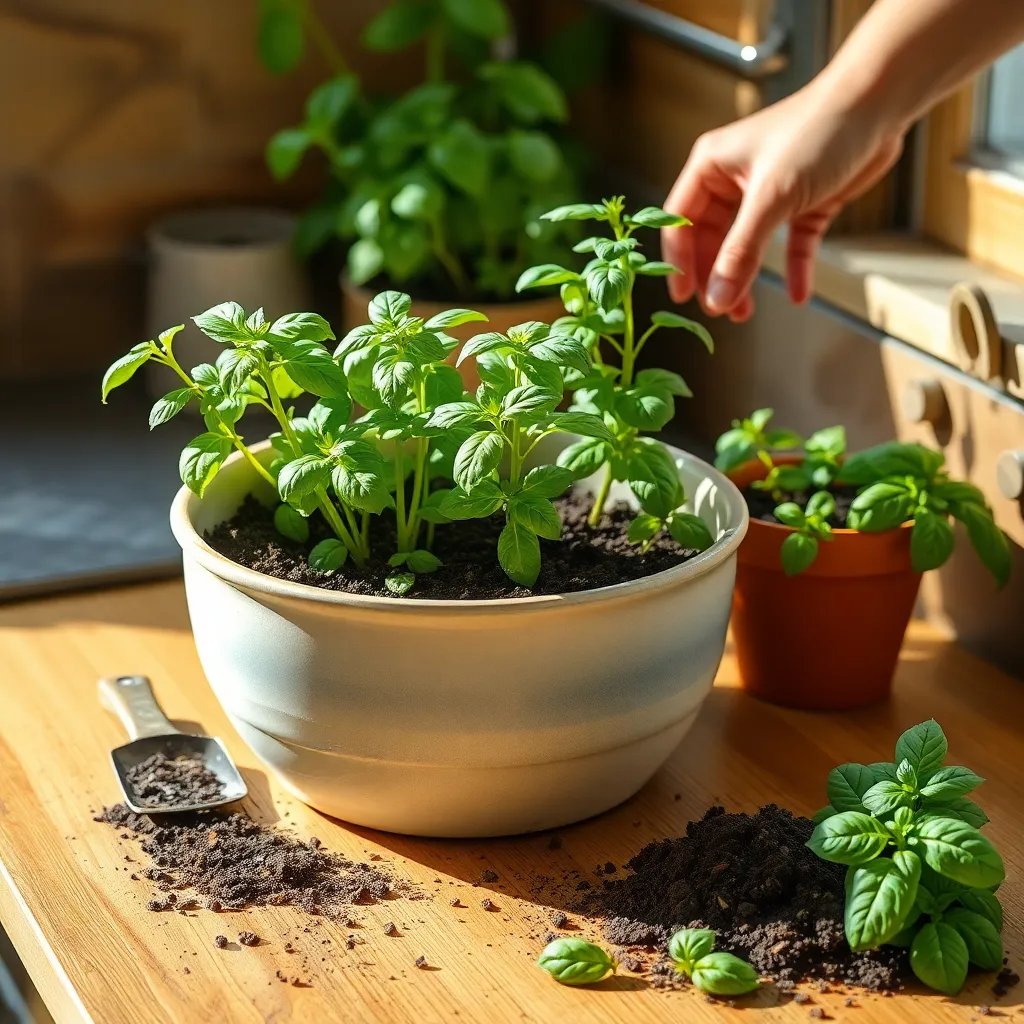
To ensure your basil thrives indoors, creating a well-draining potting mix is crucial. Begin with a base of high-quality potting soil, which provides the essential nutrients needed for healthy growth.
Incorporate materials such as perlite or coarse sand into the potting soil to enhance drainage. This step is vital because basil roots dislike sitting in water, which can lead to root rot.
Adding a handful of compost or worm castings can boost soil fertility, offering your basil a rich source of natural nutrients. This not only feeds the plant but also helps improve the soil structure, promoting better drainage.
Maintain a consistent watering schedule, allowing the top inch of the soil to dry out between waterings. By doing so, you prevent overwatering, which is a common mistake when growing basil indoors.
- Tip for Beginners: Use a moisture meter to check soil moisture levels if you’re unsure.
- Advanced Tip: Experiment with different ratios of perlite and potting soil to find the best mix for your indoor environment.
Plant Seeds in Small Containers
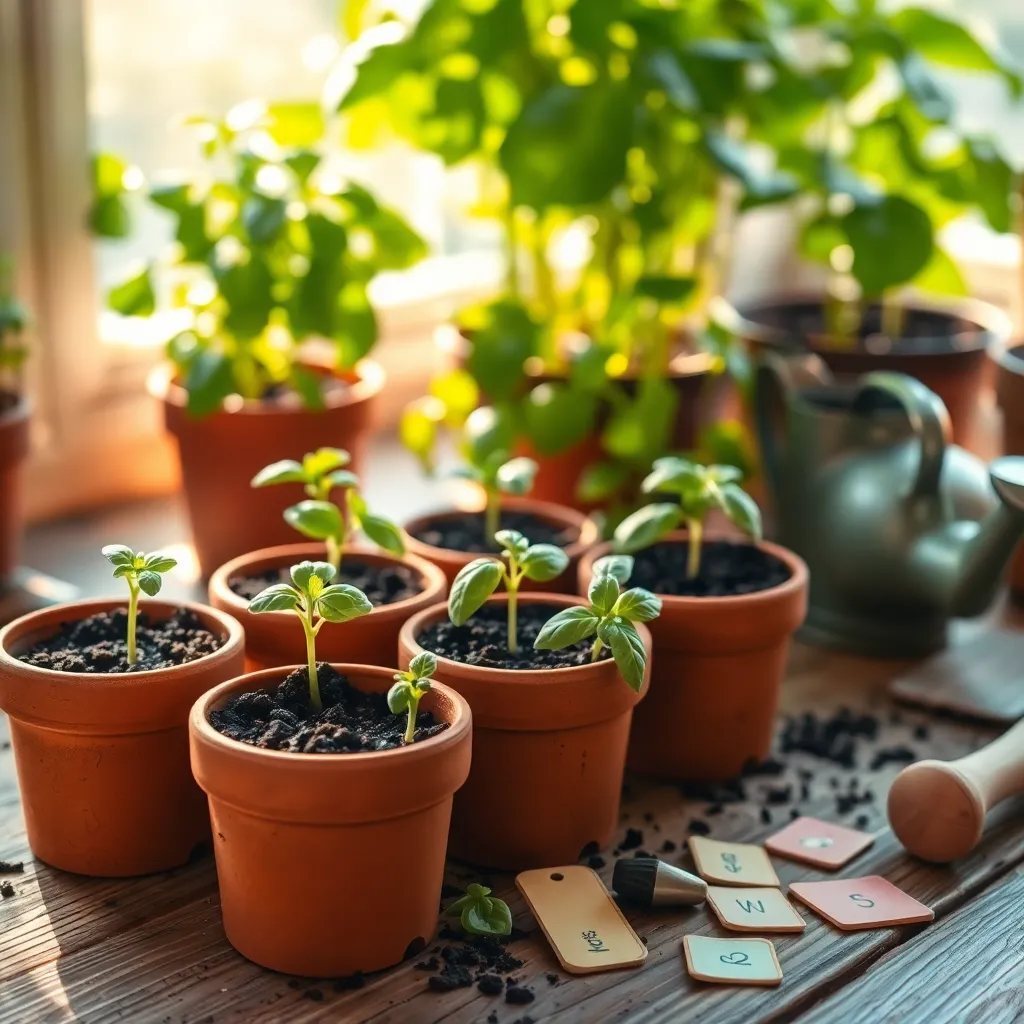
Starting basil seeds in small containers is a perfect way to begin your indoor garden. Use containers that are at least 2 inches deep with drainage holes to prevent waterlogging, which can harm young seedlings.
Fill each container with the well-draining potting mix you’ve prepared, leaving about a half-inch space from the top. Gently firm the soil to eliminate air pockets, ensuring a stable environment for the seeds.
Place 2-3 basil seeds on the soil surface and cover them with a thin layer of potting mix, about 1/4 inch deep. Lightly mist the surface with water to moisten the seeds without displacing them.
To maintain optimal moisture, cover the containers with a clear plastic wrap or a plastic dome. This creates a mini greenhouse effect, aiding in faster germination by keeping the soil consistently warm and damp.
Position the containers in a warm spot, ideally where temperatures range between 70-75°F. A sunny windowsill or under a grow light will provide the necessary light, ensuring the seeds have the best start possible.
Position Pots for Optimal Sunlight
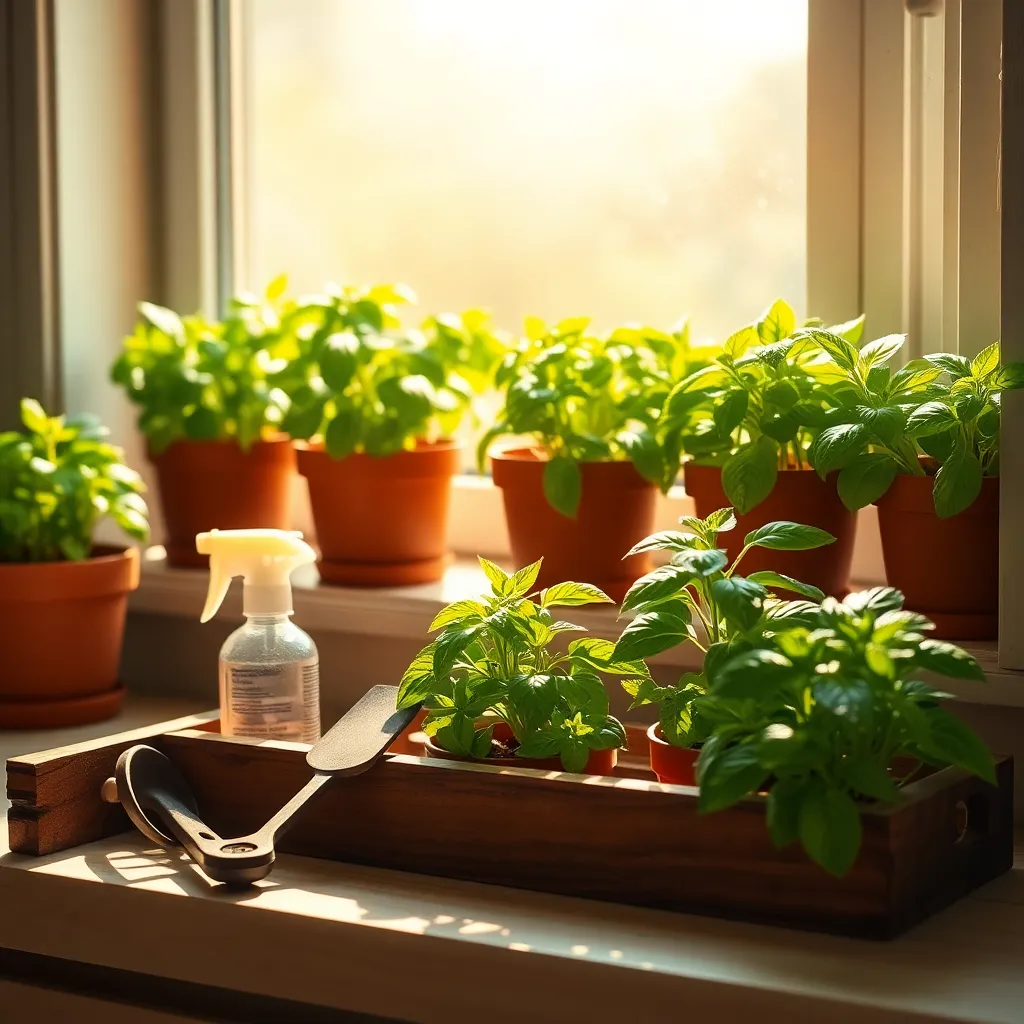
To ensure your basil thrives indoors, it’s crucial to position pots where they receive ample sunlight. Basil requires at least six to eight hours of direct sunlight each day for optimal growth.
Consider placing your pots on a south-facing windowsill, as it typically provides the most consistent light. If a south-facing window isn’t available, an east or west-facing window can suffice, but you may need to supplement with grow lights.
For those without sufficient natural light, using a full-spectrum LED grow light can mimic sunlight and support healthy basil growth. Position the grow light about 4 to 6 inches above the plant, adjusting as your basil grows taller.
Additionally, rotating the pots every few days will help your plants grow evenly and prevent them from leaning towards the light source. This simple step encourages a more compact and bushy growth pattern, which is ideal for basil cultivation.
Maintain Consistent Watering Routine
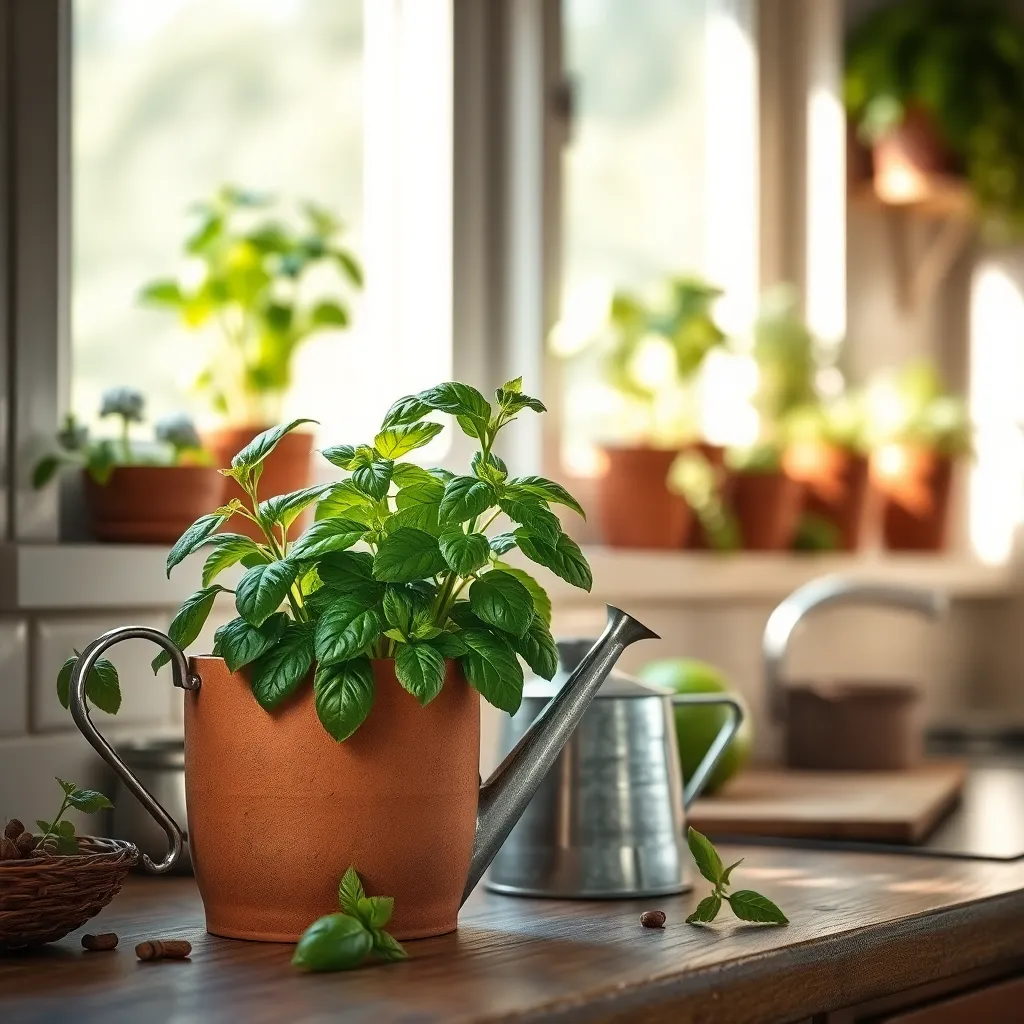
Establishing a consistent watering routine is crucial for successfully growing basil indoors. Aim to water your basil when the top inch of soil feels dry to the touch, ensuring the plant receives the moisture it needs without being overwatered.
It’s important to use well-draining soil to prevent root rot, which can occur if the basil’s roots sit in water for too long. Consider using a potting mix specifically designed for herbs, which typically includes ingredients like perlite or vermiculite to improve drainage.
For those looking for more precise watering techniques, a moisture meter can be an excellent tool. This device helps you determine the exact moisture level in the soil, allowing you to tailor your watering schedule more accurately.
To further optimize your watering routine, water your basil in the morning. This timing allows the plant to absorb moisture throughout the day and reduces the risk of mold or mildew forming overnight.
Conclusion: Growing Success with These Plants
In nurturing a thriving indoor basil garden, five key relationship concepts emerge that are equally vital in cultivating personal connections: attention to environment, consistent care, understanding growth stages, effective communication, and patience. Just as basil requires the right light, water, and soil to flourish, so too do relationships need a supportive environment to thrive. By consistently tending to your basil, you mirror the importance of regularly investing time and effort into your relationships. Recognizing the different stages of growth in your plants reminds you that relationships evolve and need nurturing at every phase. Effective communication, much like understanding your plant’s needs, ensures that both parties feel heard and valued. Lastly, patience is the golden thread that weaves these elements together, reminding you that both plants and relationships require time to bloom fully.
As an actionable step, take a moment today to nurture a relationship in your life—send a thoughtful message or plan a small surprise. Save this article as your go-to guide for both basil and relationship care. Remember, just as your basil grows with love and attention, so too will your relationships flourish with mindful care. Your journey towards relationship success is just beginning—embrace it with enthusiasm and watch both your garden and connections blossom.

